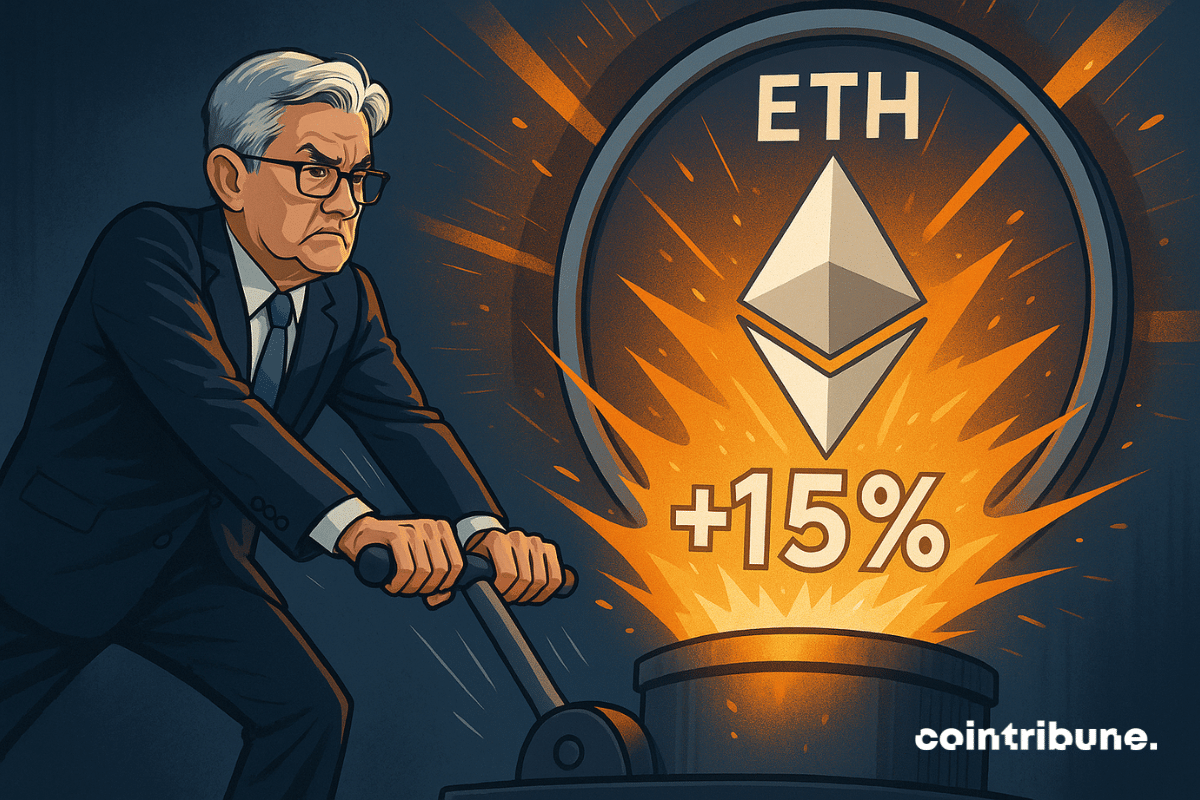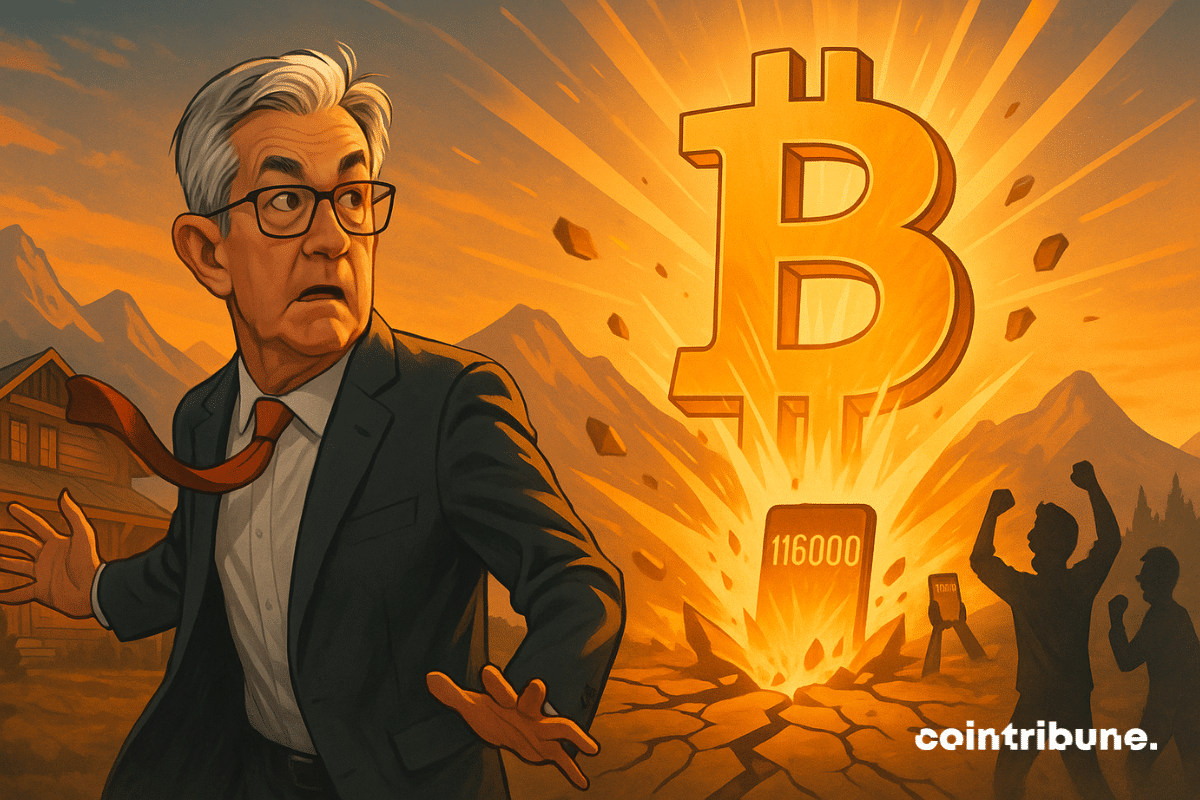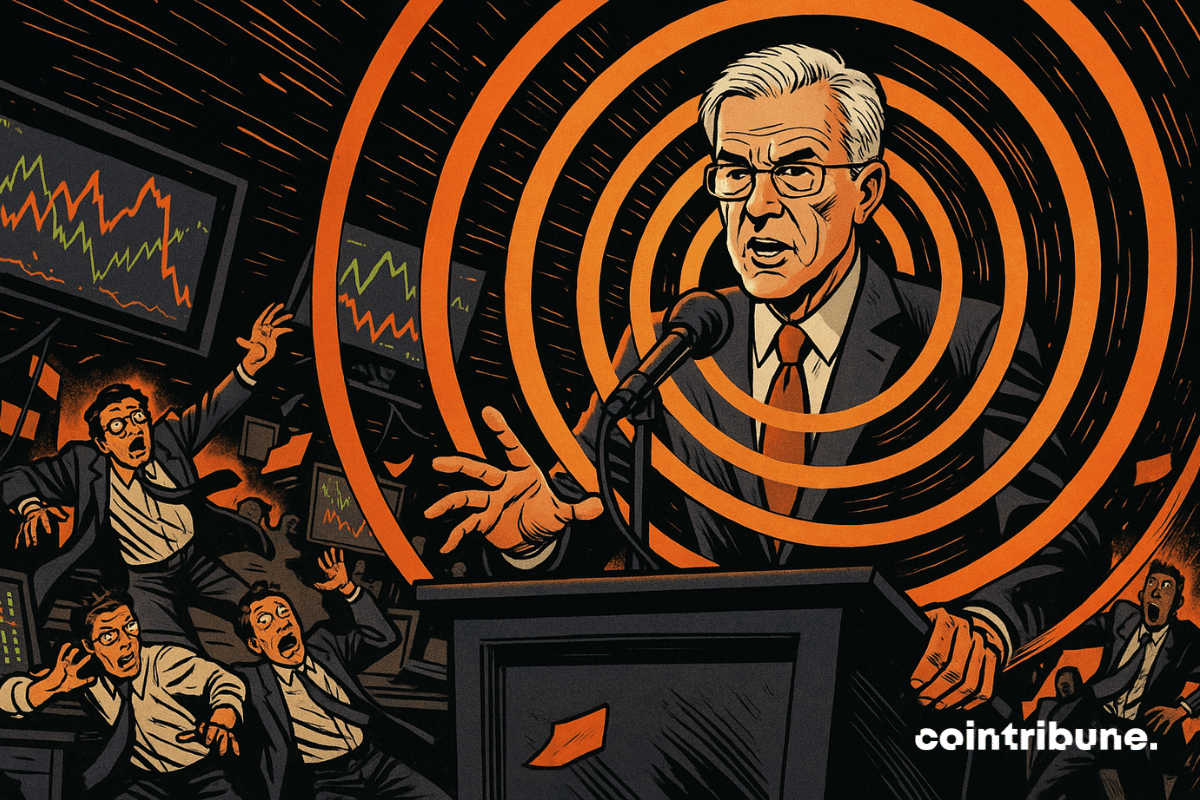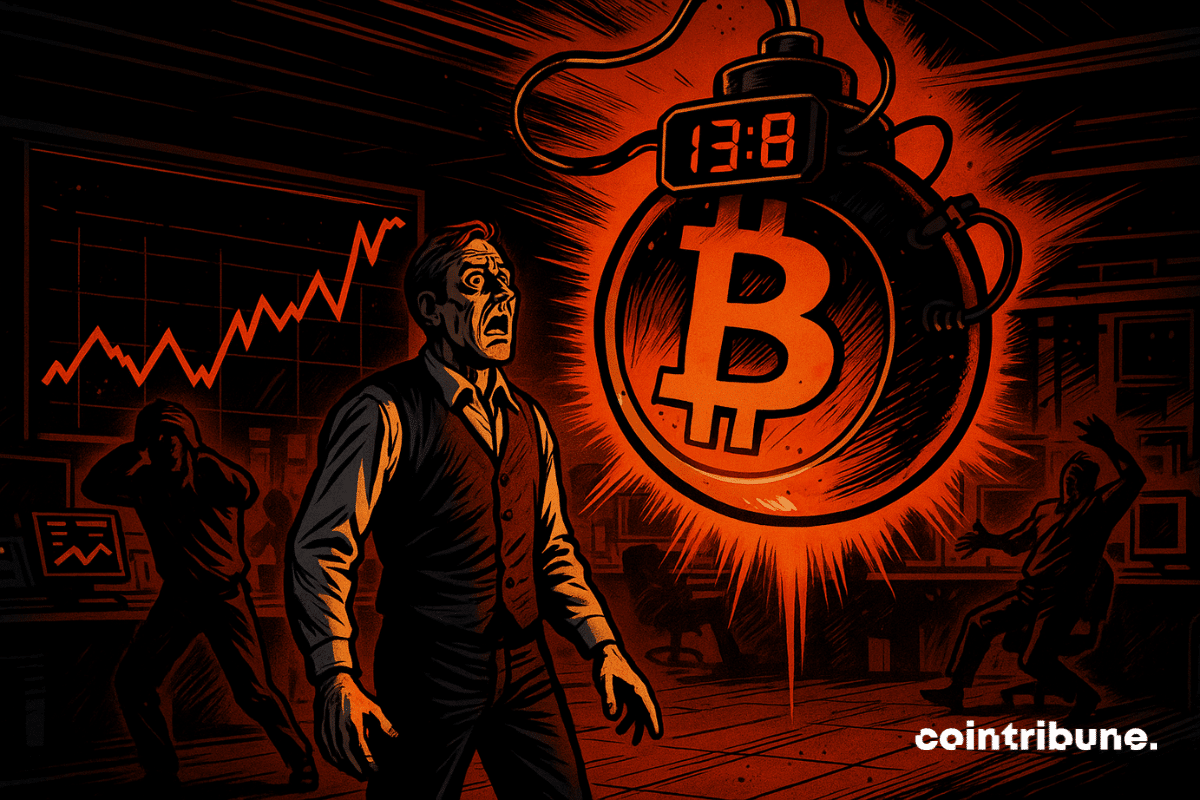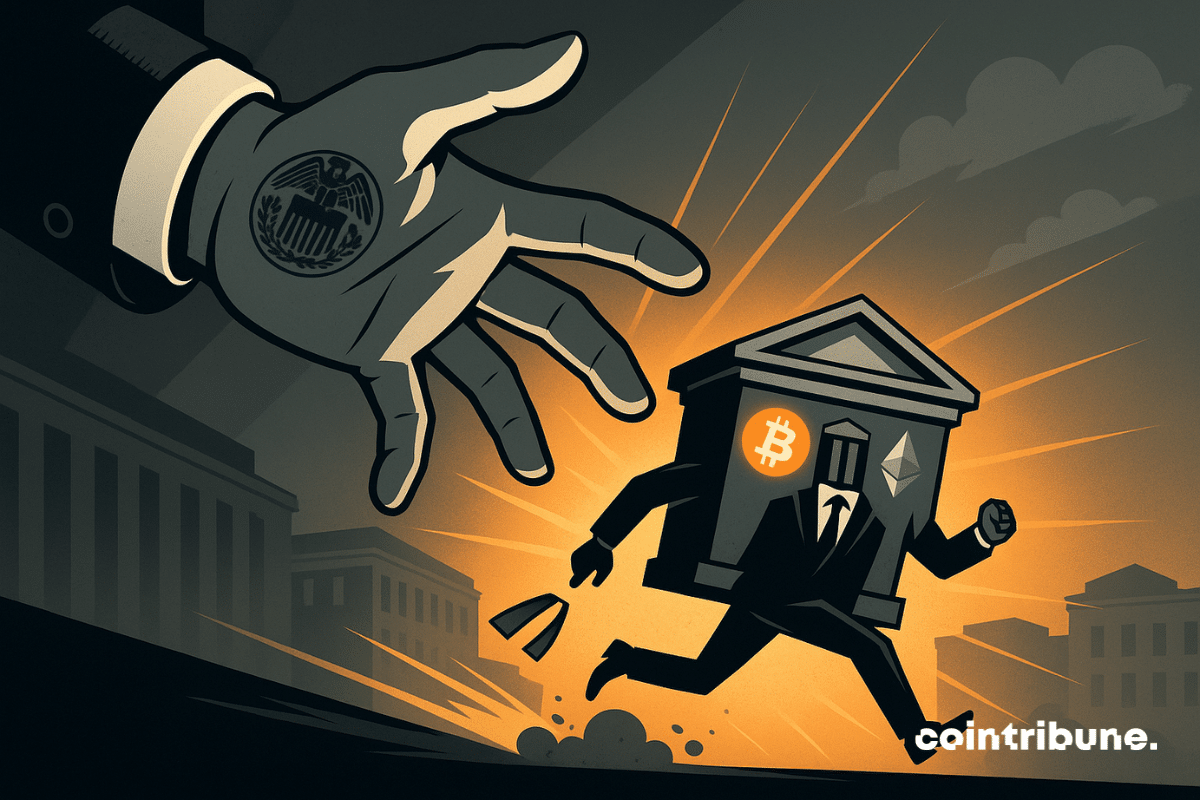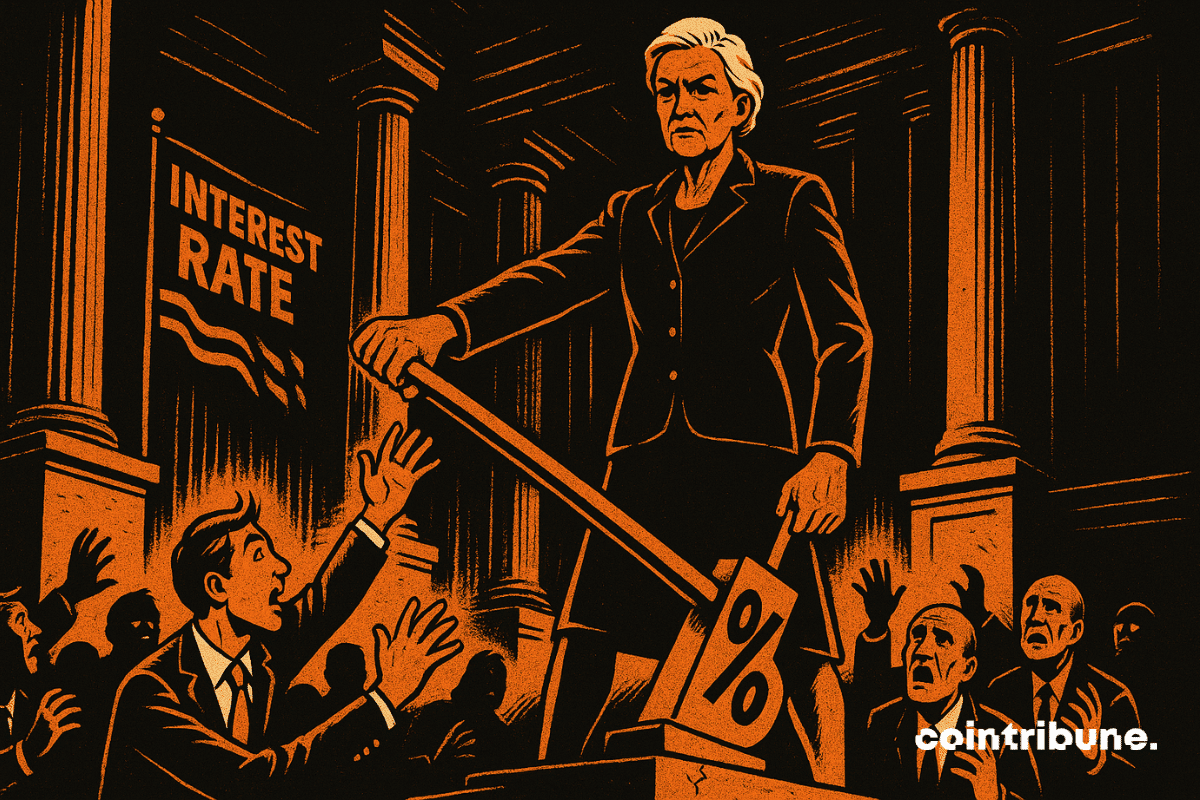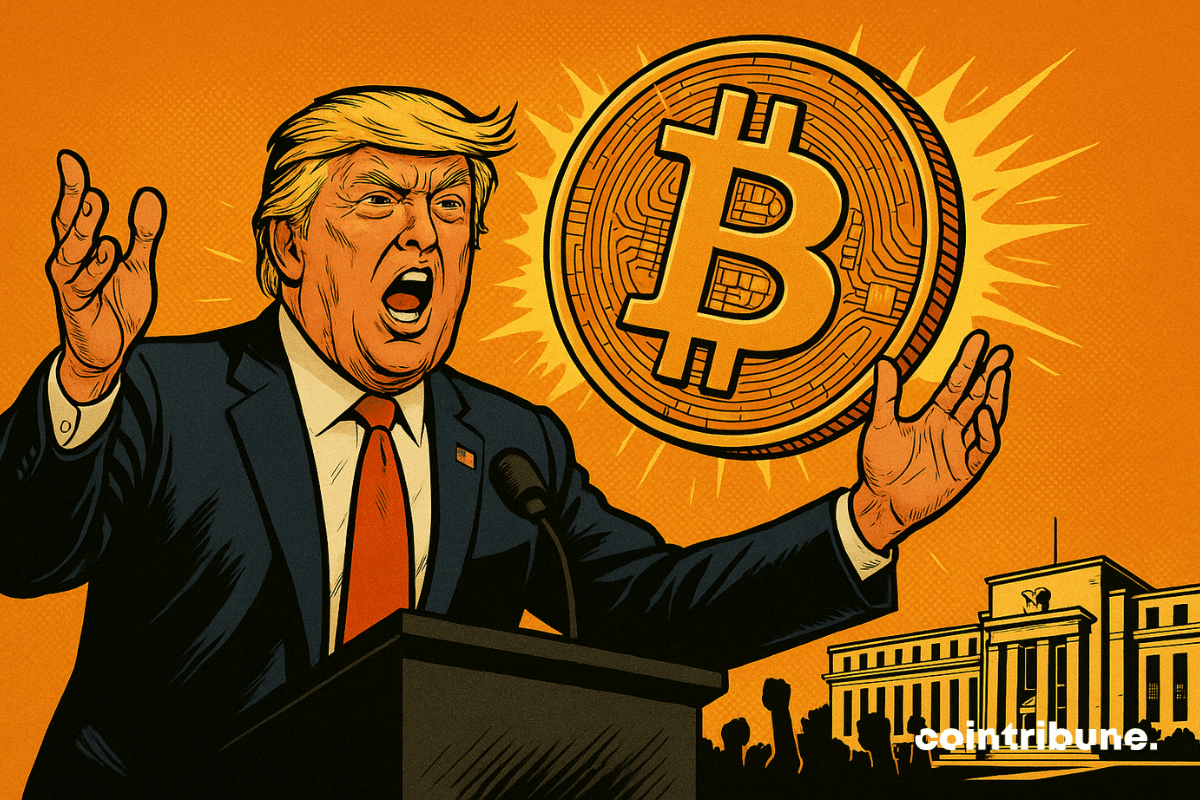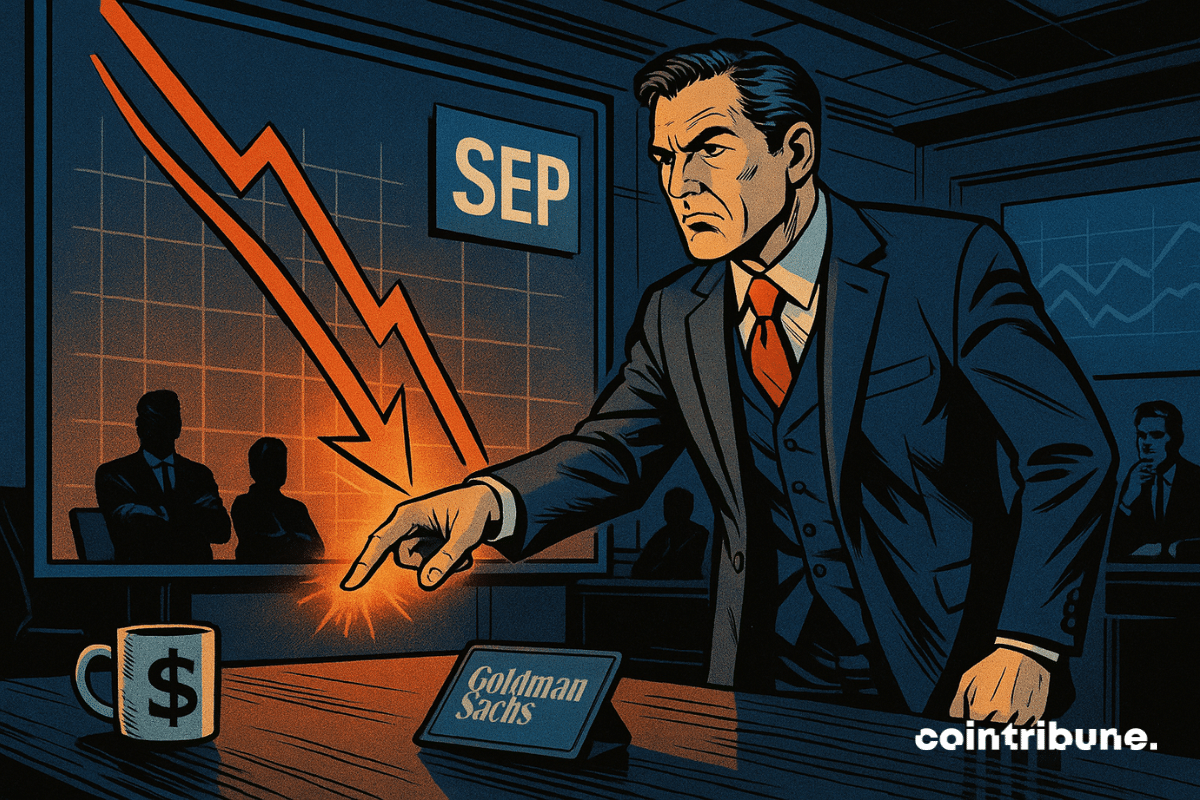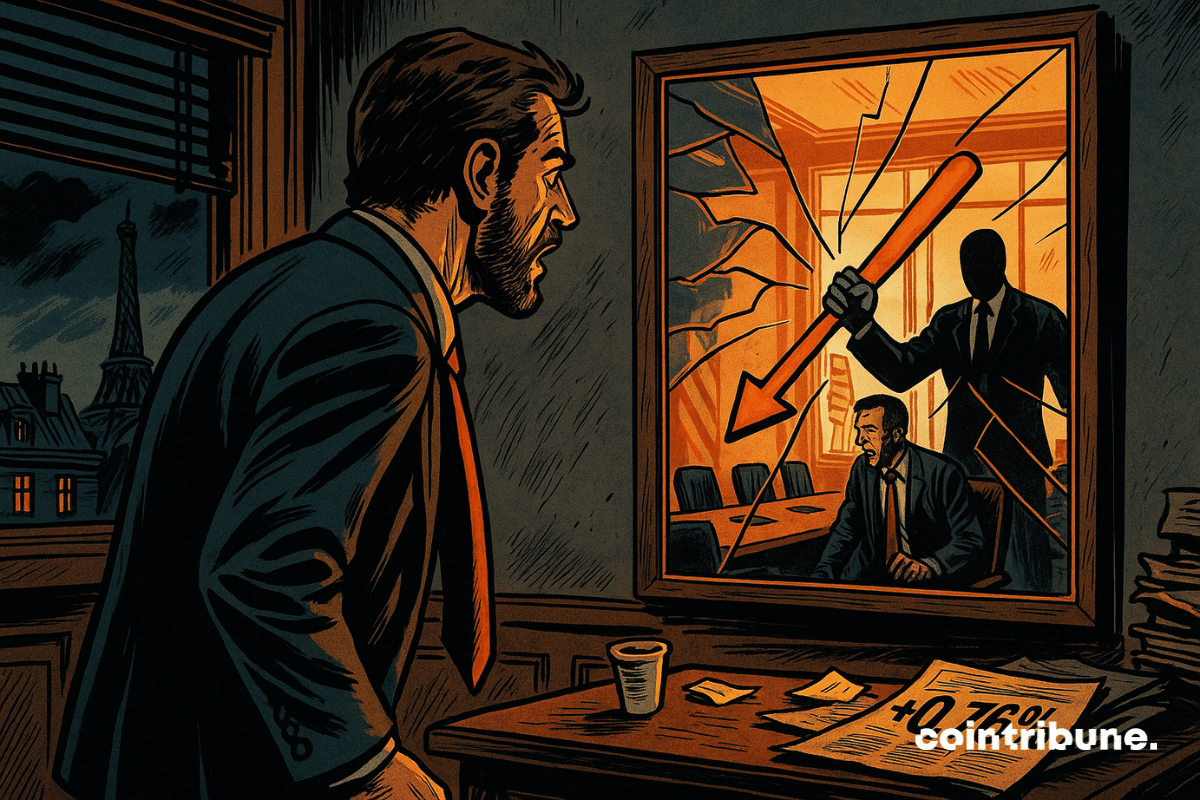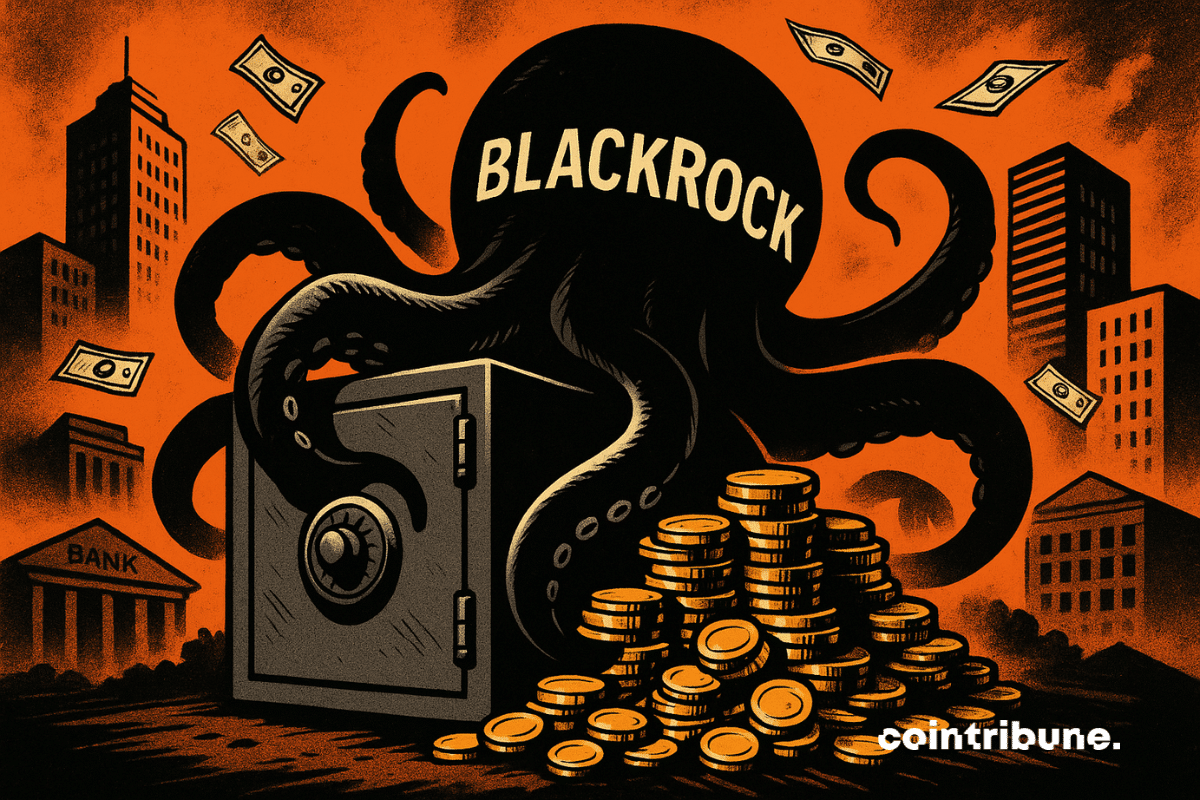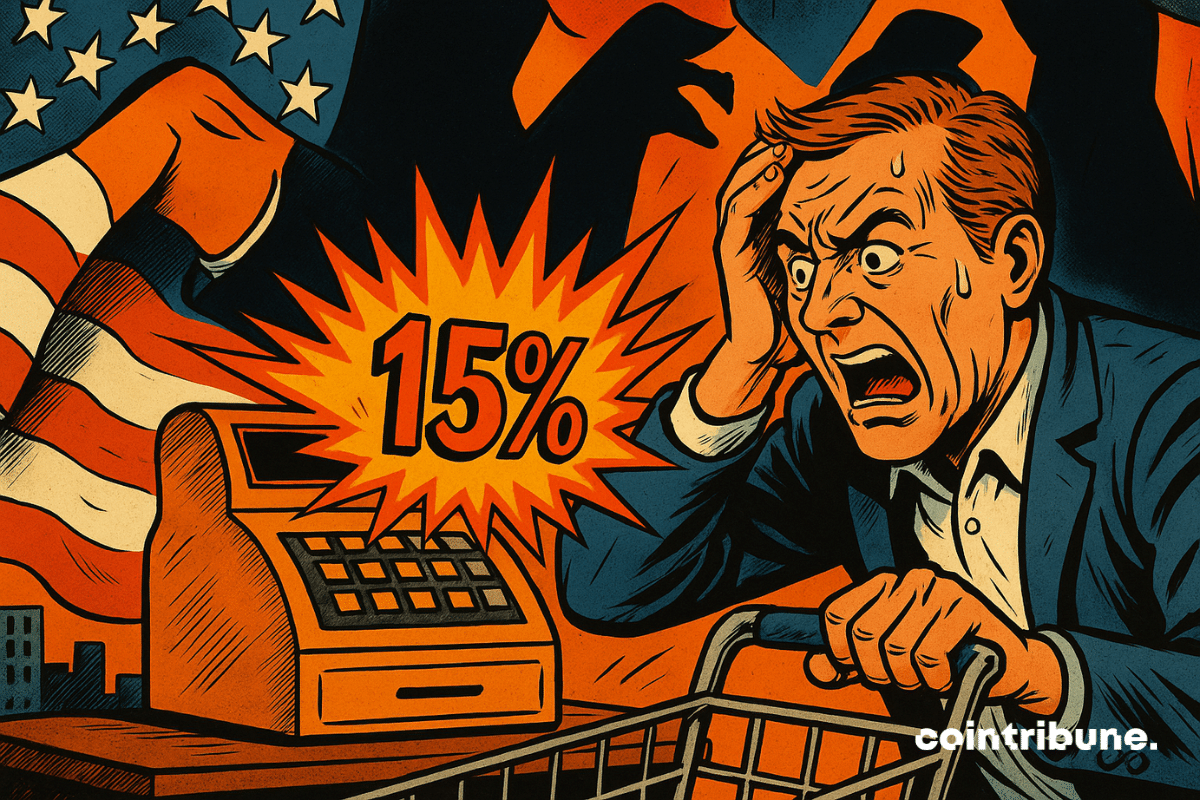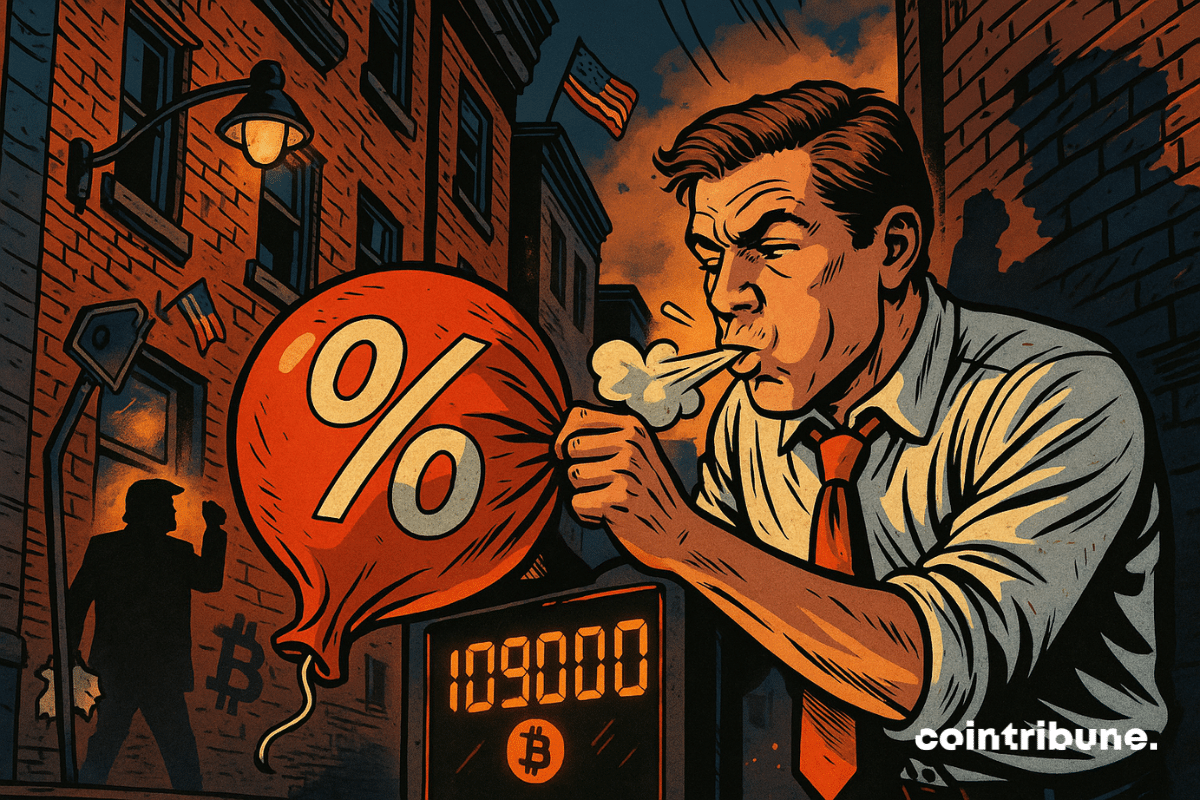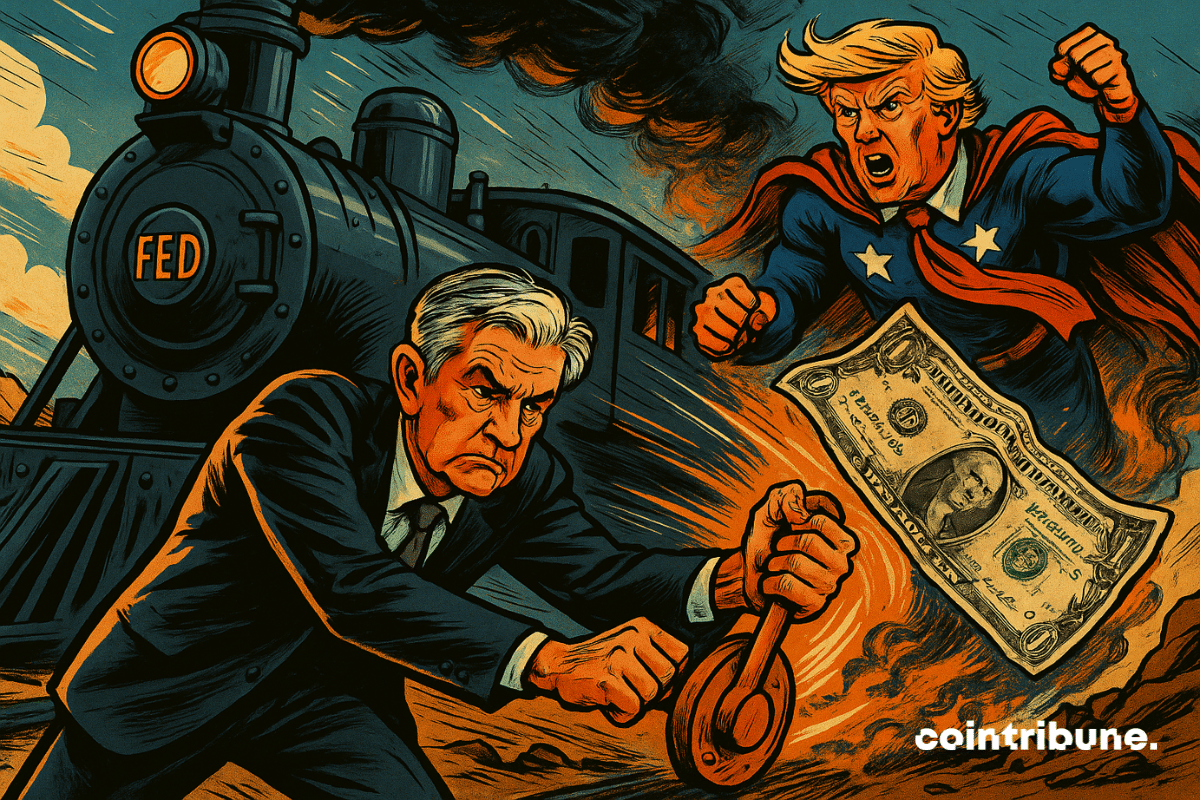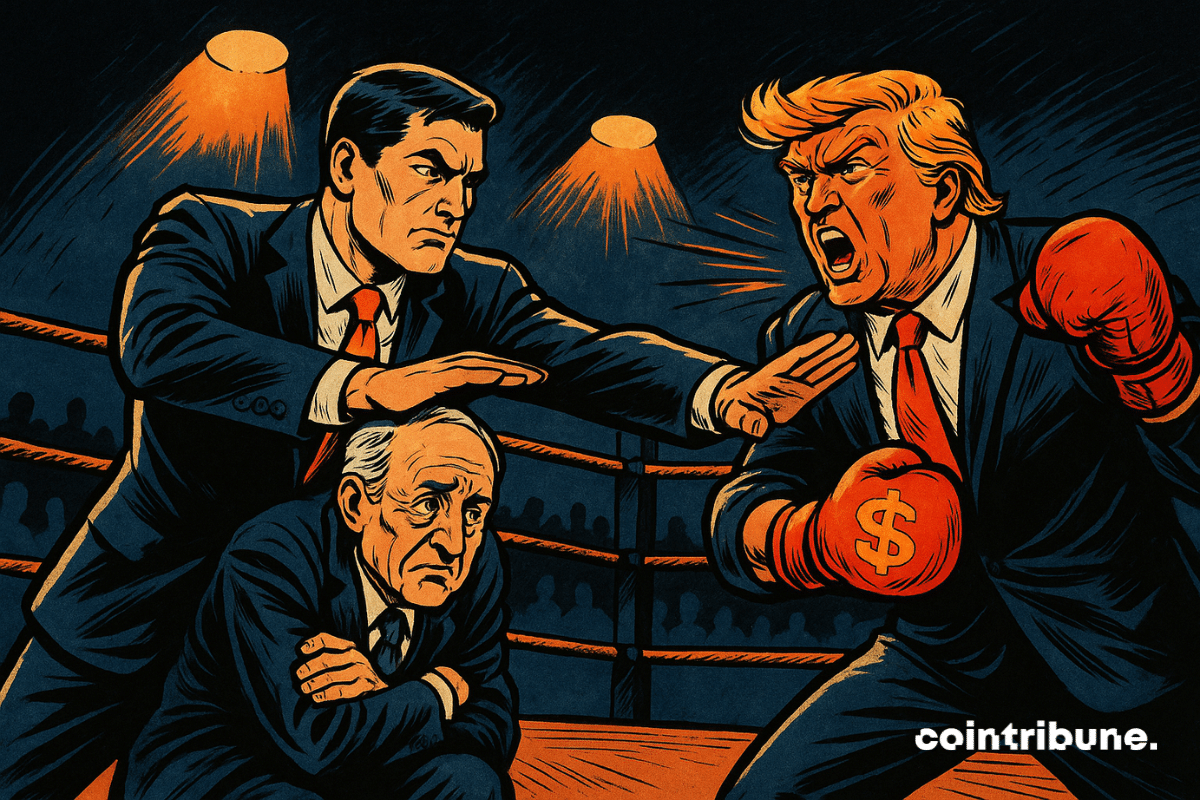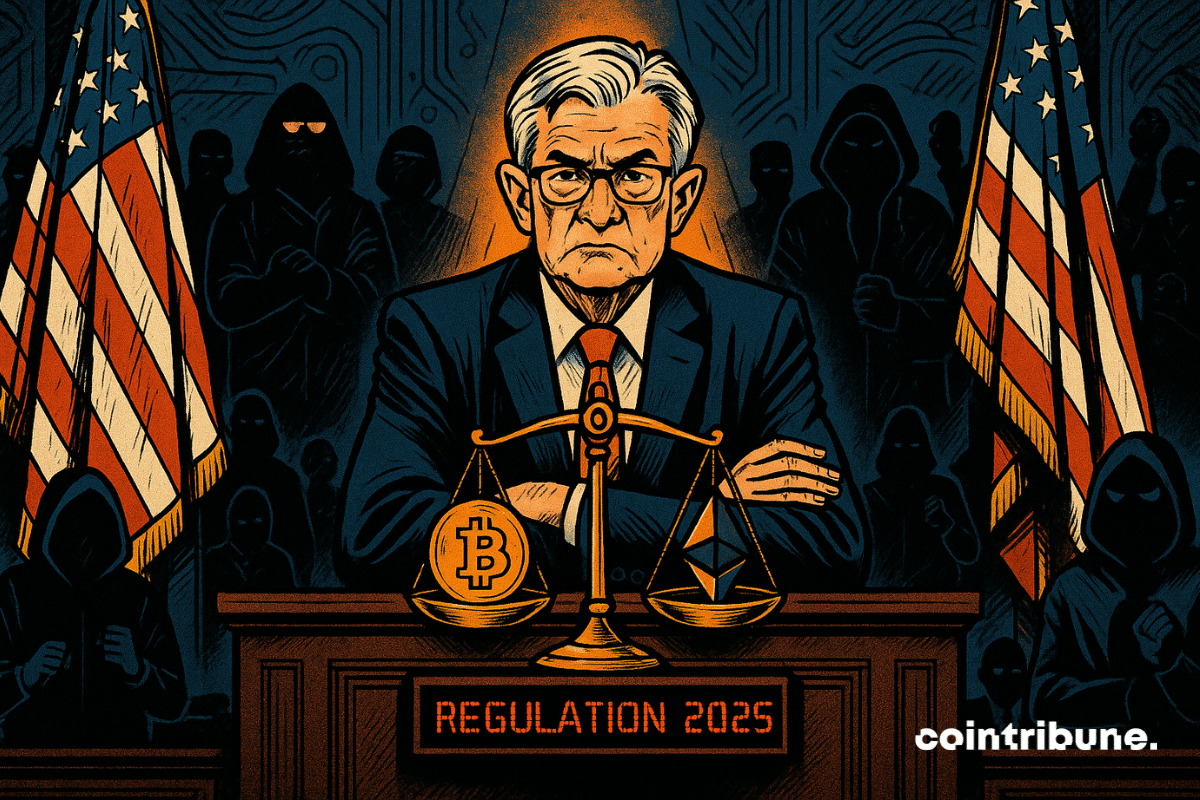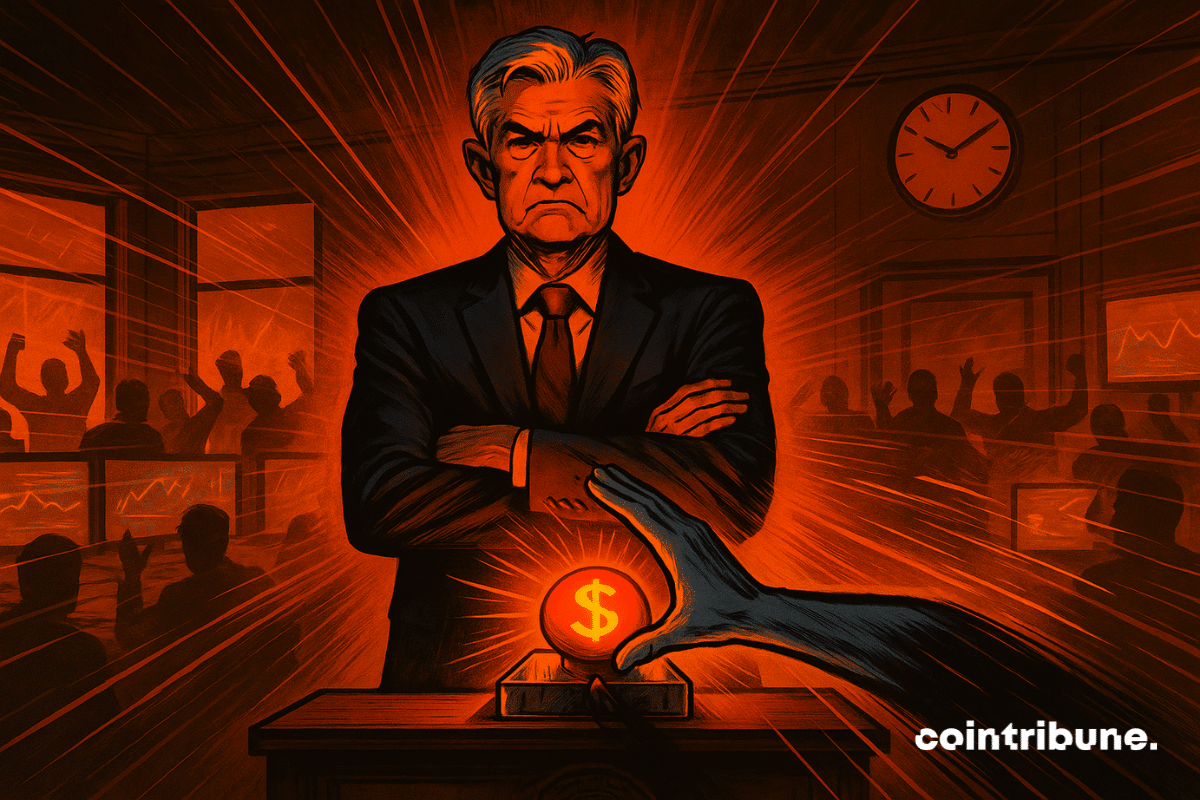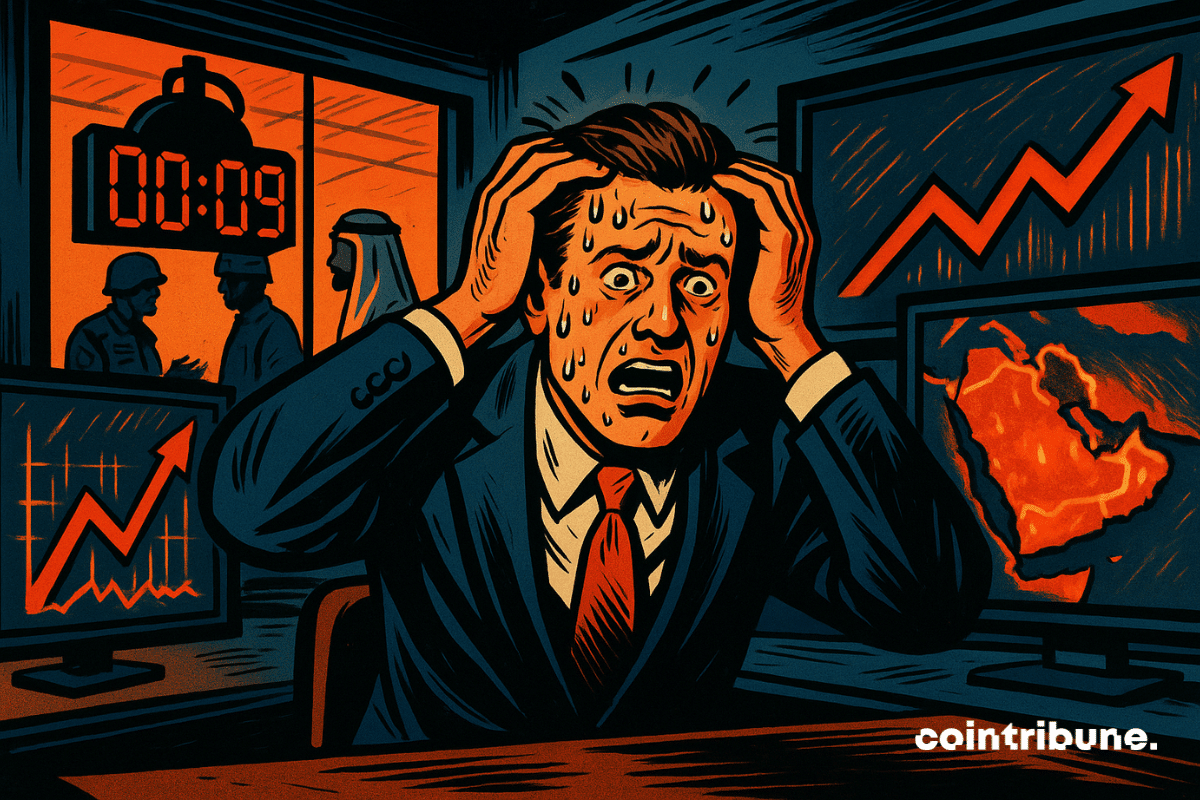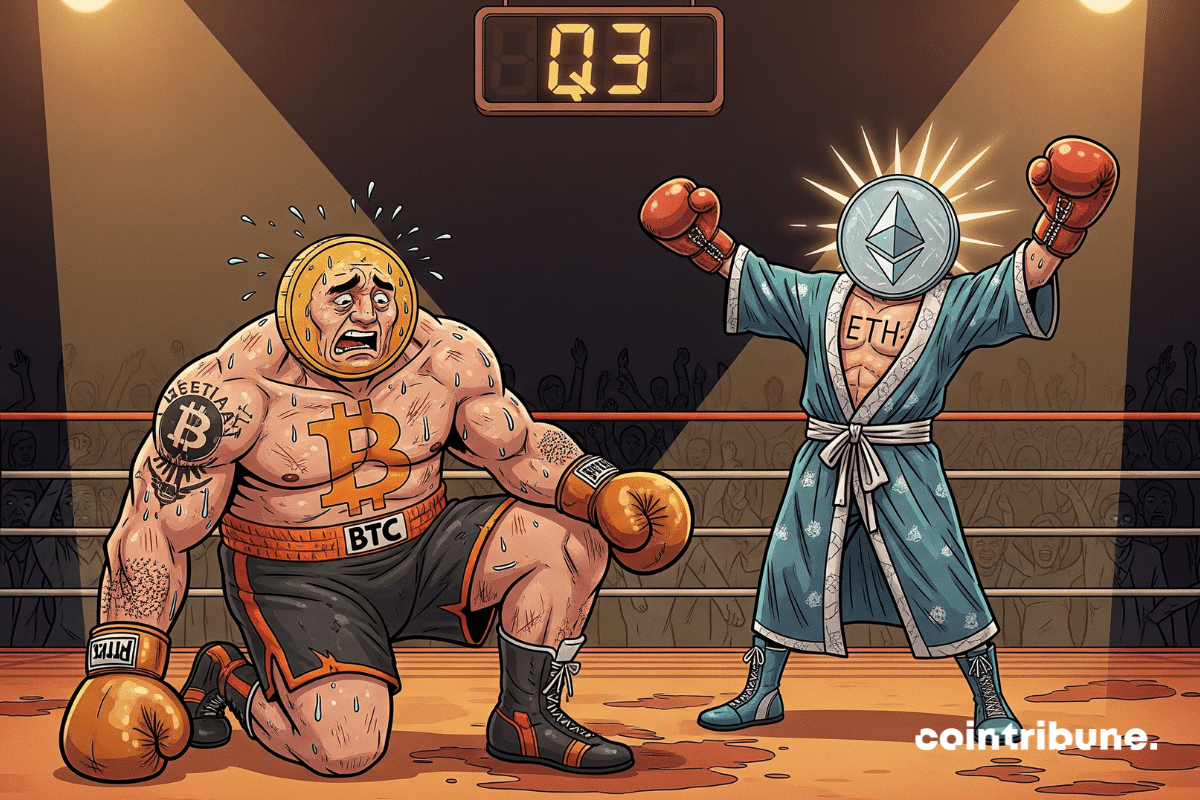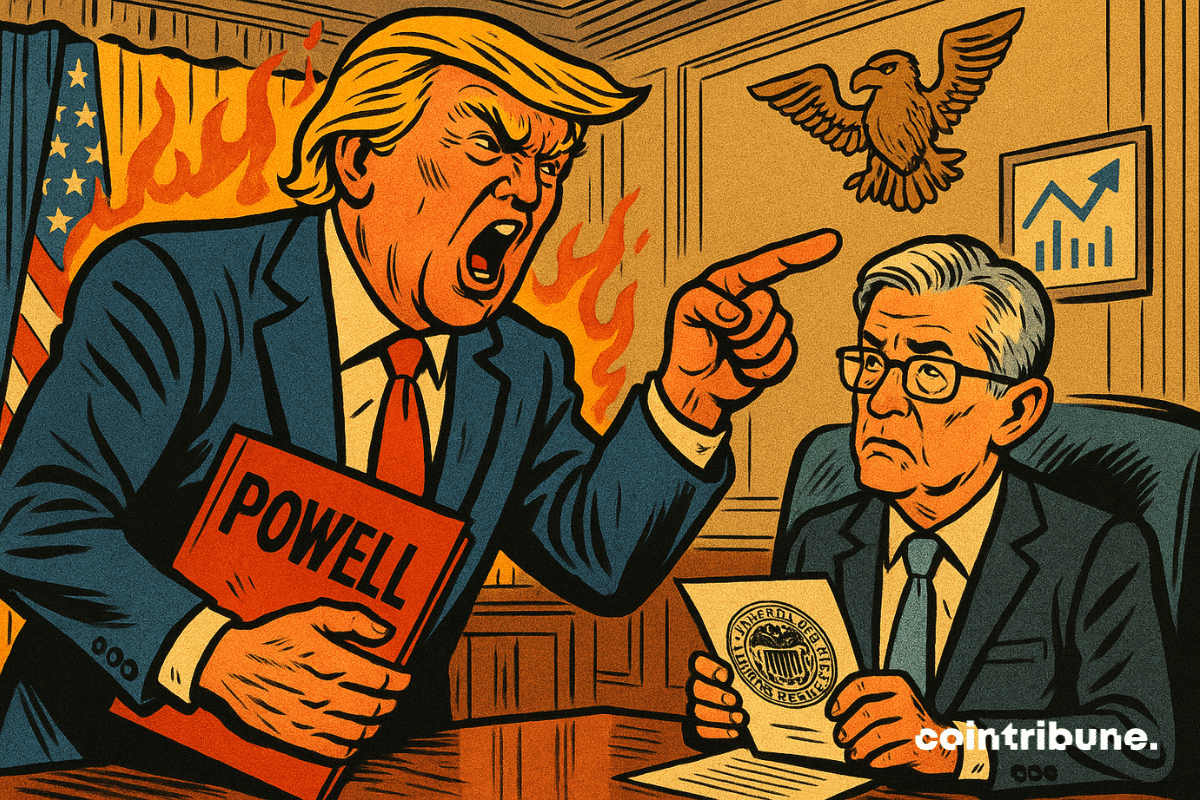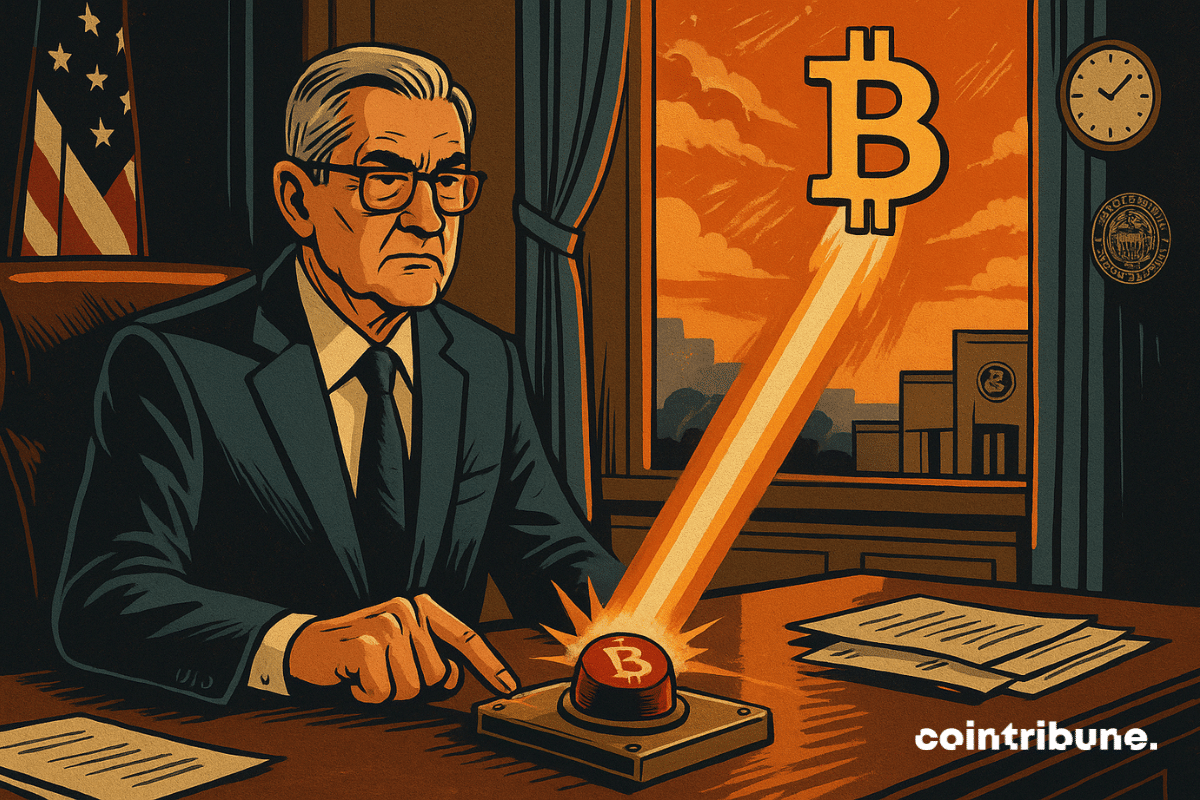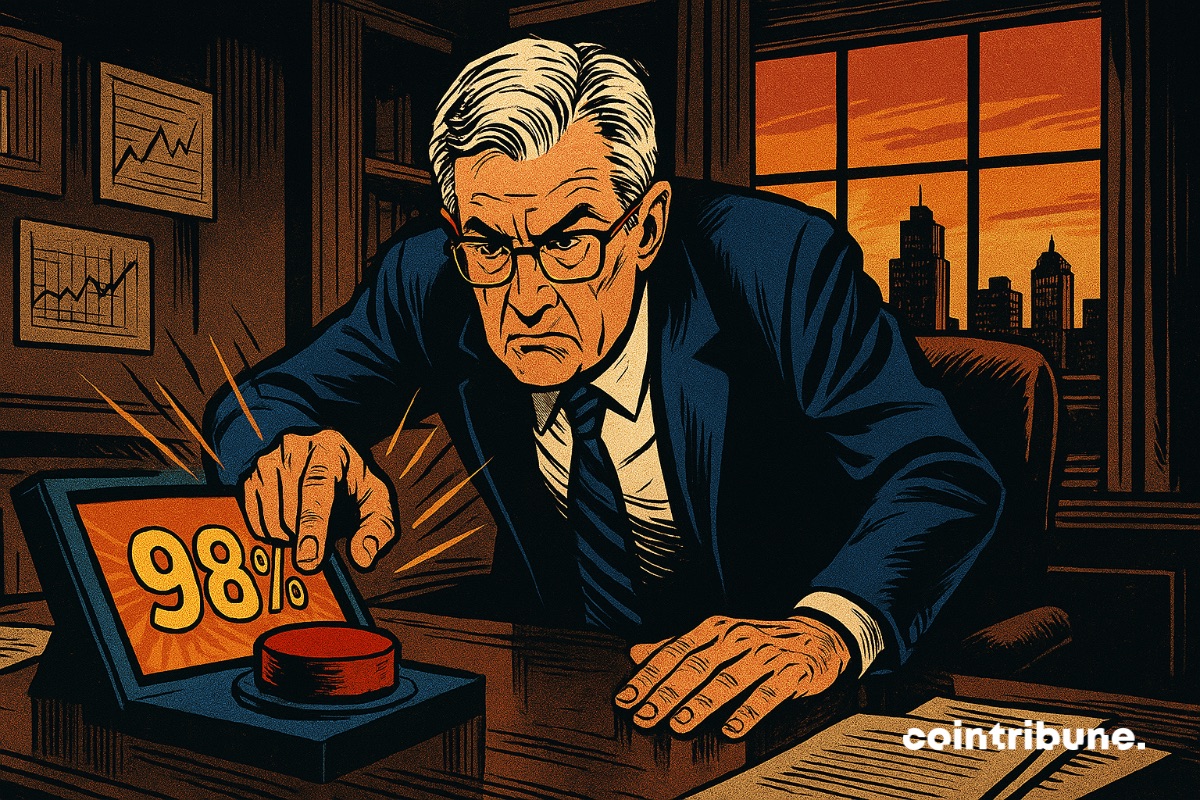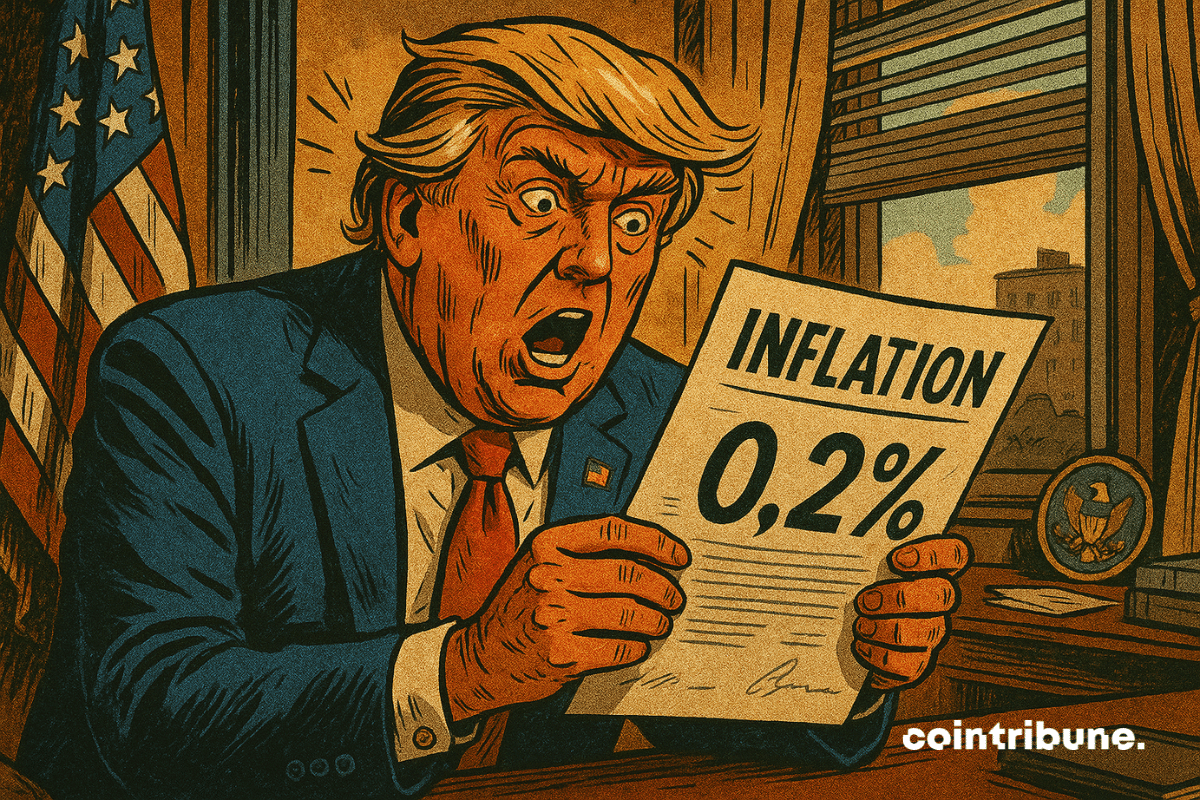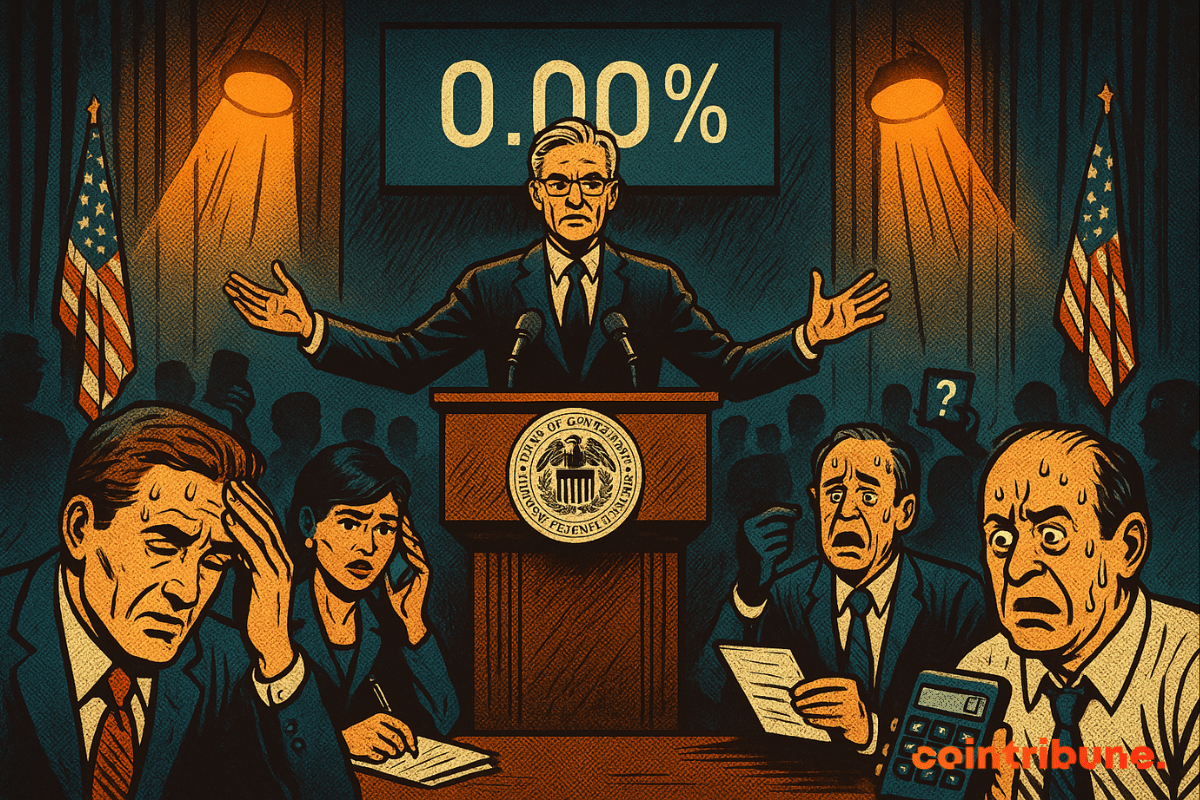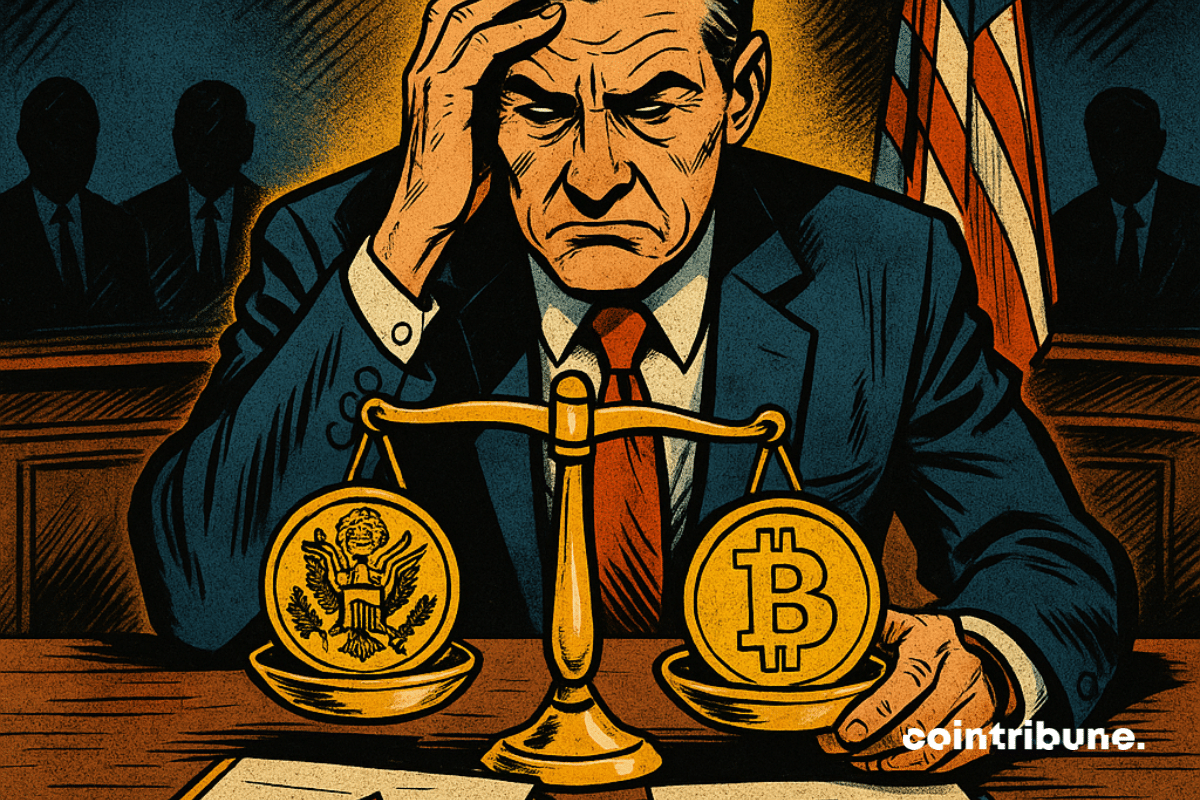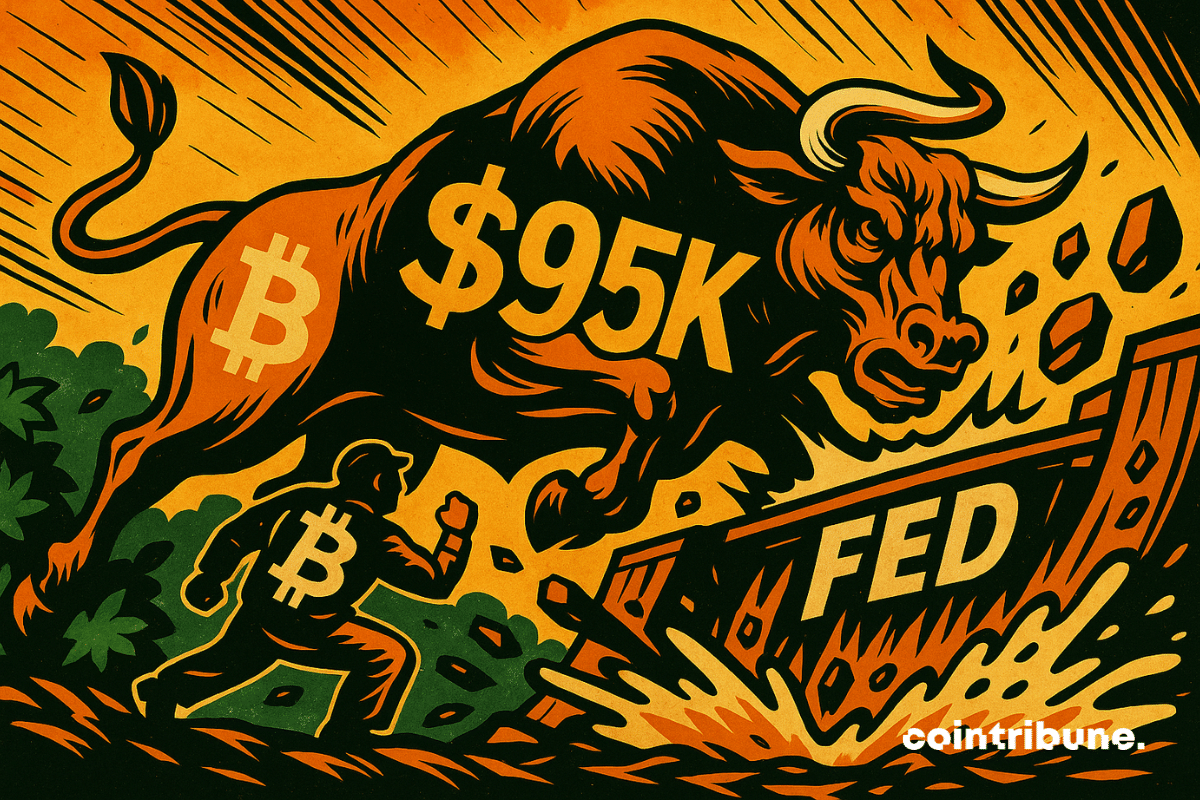While traditional markets seek new momentum, Ethereum confirms its central role in the digital financial ecosystem. This Friday, ETH crossed a historic threshold at 4,880 dollars, surpassing its 2021 record. This symbolic peak is part of a global crypto market rally, driven by a more accommodative tone from the Fed and renewed interest from institutional investors. The event marks a strategic turning point for Ethereum, now seen not merely as a speculative asset but as a pillar of future financial infrastructures.
US Federal Reserve (FED)
Jerome Powell caught everyone off guard at Jackson Hole by adopting a much more accommodative monetary stance. This unexpected change in tone immediately boosted risky assets. Bitcoin, at the forefront, broke through $116,000. This strategic reversal could mark a major turning point in the Fed's direction.
This Friday, the chairman of the Federal Reserve could deliver his last major speech, in a tense economic context and under unprecedented political pressure. Wall Street, the White House, and all markets are waiting for clear signals. Rate guidance, stance on inflation, Fed independence: every word will count, and could weigh heavily.
On August 29, $13.8 billion worth of Bitcoin options will expire, a deadline that could dictate the market trajectory. BTC just hit its lowest point in six weeks, heightening tensions between weakened buyers and sellers determined to defend their positions. More than just a technical event, this clash over derivatives crystallizes the uncertainty surrounding Bitcoin's immediate future.
Bitcoin in free fall, "hidden hands" at work, and the Fed lying in ambush: who is manipulating the market while traders play prophets?
After several years of heightened caution, the US Federal Reserve changes course regarding banks' crypto activities. The institution ends its specific monitoring program. It believes, indeed, that the risks linked to digital assets are now better understood and manageable within the traditional supervisory framework.
While the majority anticipated a Fed rate cut in September, a key indicator casts doubt. The latest Producer Price Index (PPI) release rekindles inflation fears and cools hopes for monetary easing. This subtle but meaningful reversal reshuffles the deck in a context where Fed policy dictates the rhythm of risky assets, and more than ever, that of the crypto market.
Donald Trump strikes again. After opening 401(k) retirement plans to alternative assets like bitcoin, he appoints Stephen Miran, a pro-Bitcoin economist, to the Federal Reserve board. A move welcomed by the crypto market, propelling BTC beyond 117,500 dollars.
Warning signs are everywhere. Between the explosion of inequalities and record debt, the global financial system is dangerously shaky. Faced with 37 trillion dollars of debt in the United States alone, one question arises: are we witnessing the end of capitalism as we know it?
The U.S. Federal Reserve could initiate a major shift as early as September with a first reduction in its key rates. A scenario now considered by several large banks, including Goldman Sachs, which reshapes the outlook for financial markets. For crypto investors, faced for months with a restrictive monetary context, this expected pivot could rekindle the appetite for risk and serve as a catalyst for a new bullish cycle.
The Paris stock market rises by 0.76% as the Fed could ease its policy in response to the American economic slowdown.
Larry Fink, CEO of BlackRock, recently published a revealing article in the Financial Times about his vision of "globalization 2.0." This new approach aims to direct citizens' savings towards investments in local infrastructure, under the guidance of asset managers like BlackRock.
Prices are rising in the United States, and it’s not a coincidence. Since Donald Trump's return to the White House, his aggressive trade policy is starting to weigh on the economy. The tariffs he has imposed are impacting household wallets, driving inflation up faster than expected.
Less fear around inflation: Bitcoin rises to $109,000, supported by calmer economic forecasts. More details here!
While the stock market progresses timidly, it is the dollar that falters, weakened by the dual pressure of the new trade taxes imposed by Donald Trump and the ongoing hesitation of the Federal Reserve. In this tense atmosphere, investors oscillate between the quest for yield and the caution dictated by the surrounding instability. The apparent calm conceals a palpable nervousness: that of a market that knows that everything can tip at the slightest jolt.
While markets were expecting a clear monetary shift in 2025, Jerome Powell, the chairman of the Federal Reserve, dampened hopes by pointing to an unexpected culprit: Trump. Yes, Donald Trump, back in the White House since January, is leaving his mark on the American economy, to the point of forcing the Fed to play for time. In a context where every word matters, Powell dropped a diplomatic bombshell, accusing Trump's policies of blocking interest rate cuts.
The BIS stands up to defend the Fed. Can the economy withstand a monetary crisis? The details in this article!
Against the backdrop of years of regulatory ambiguity, Washington seems to want to take control of the crypto ecosystem. On June 18, Federal Reserve Chairman Jerome Powell surprised many by clearly supporting two landmark bills on stablecoins and the crypto market. In a changing political climate in the United States, this stance marks a potential turning point for the industry, which has long awaited a solid and predictable legal framework.
By maintaining its benchmark rates for the fourth consecutive time, the Fed has not simply extended a monetary policy. It has taken a stance in a tense economic and political landscape. Stubborn inflation, weakened growth, barely concealed political pressure... The status quo decided on June 18 resembles a statement of intent. Behind the silence of the numbers, a strategy of resistance is taking shape as the central bank finds itself at the heart of an increasingly unstable balancing act.
Israeli airstrikes against Iran are disrupting the calculations of the American Federal Reserve (Fed). While Donald Trump is ramping up pressure for monetary easing, central bankers must now contend with a new factor of uncertainty: the geopolitical escalation that is driving oil prices up.
Bitcoin disappoints as it approaches its record. Ethereum might just steal the spotlight. All the details in this article!
While monetary decisions now dictate the pace of global markets, the White House is preparing to shake up the institutional chessboard. Donald Trump has announced that a change at the head of the Federal Reserve could be decided "very soon." From Air Force One, he is directly rekindling his standoff with Jerome Powell, against a backdrop of ongoing disagreements over rates. By threatening the independence of the Fed, Trump is reviving an old fracture with major economic and political implications.
Under pressure in the face of an uncertain economy, markets are watching every move of the Federal Reserve. Far from being limited to traditional assets, its decisions now strongly influence the crypto market. As a potential surprise rate cut approaches, bitcoin is holding its breath. Such a monetary signal could propel the first cryptocurrency to new heights, fueling expectations of a historic rally.
Will the Fed really keep its rates unchanged in June? Between persistent inflation and a surprising labor market, discover why this decision could disrupt the economy and the markets, including Bitcoin!
Fed meeting June 2025: inflation, unemployment, trade tensions... Discover how these crucial issues could disrupt interest rates and why some are already betting on bitcoin. Don't miss out!
American inflation defied all doomsday predictions in April, falling to 2.3% despite the implementation of massive tariffs by the Trump administration. This unexpected decline raises a troubling question: what if analysts had exaggerated the impact of protectionist measures? Are fears of an inflationary spiral overstated?
The stock market reacts positively to the Fed's decision to keep interest rates unchanged. Discover the key figures in this article!
When the Federal Reserve opts for inaction, markets wobble. By keeping its rates unchanged this Wednesday, the world's leading central bank met expectations but did not alleviate tensions. Thus, amid persistent inflation, slowing consumption, and uncertainties about employment, the Fed's message remains deliberately vague. This strategy of waiting increases the nervousness of financial markets and fuels speculation, particularly in the crypto world, where every word of Jerome Powell is scrutinized as a crucial indicator.
As anticipated by the majority of analysts, the United States Federal Reserve (Fed) has just kept its key interest rates in the range of 4.25-4.50% following today’s meeting. This decision comes in a context of increasing economic uncertainty and persistent political pressures.
The Fed feigns hesitation, but its printer is spewing billions. Meanwhile, Bitcoin is climbing without looking back, immune to Powell's words and Treasury debts.
